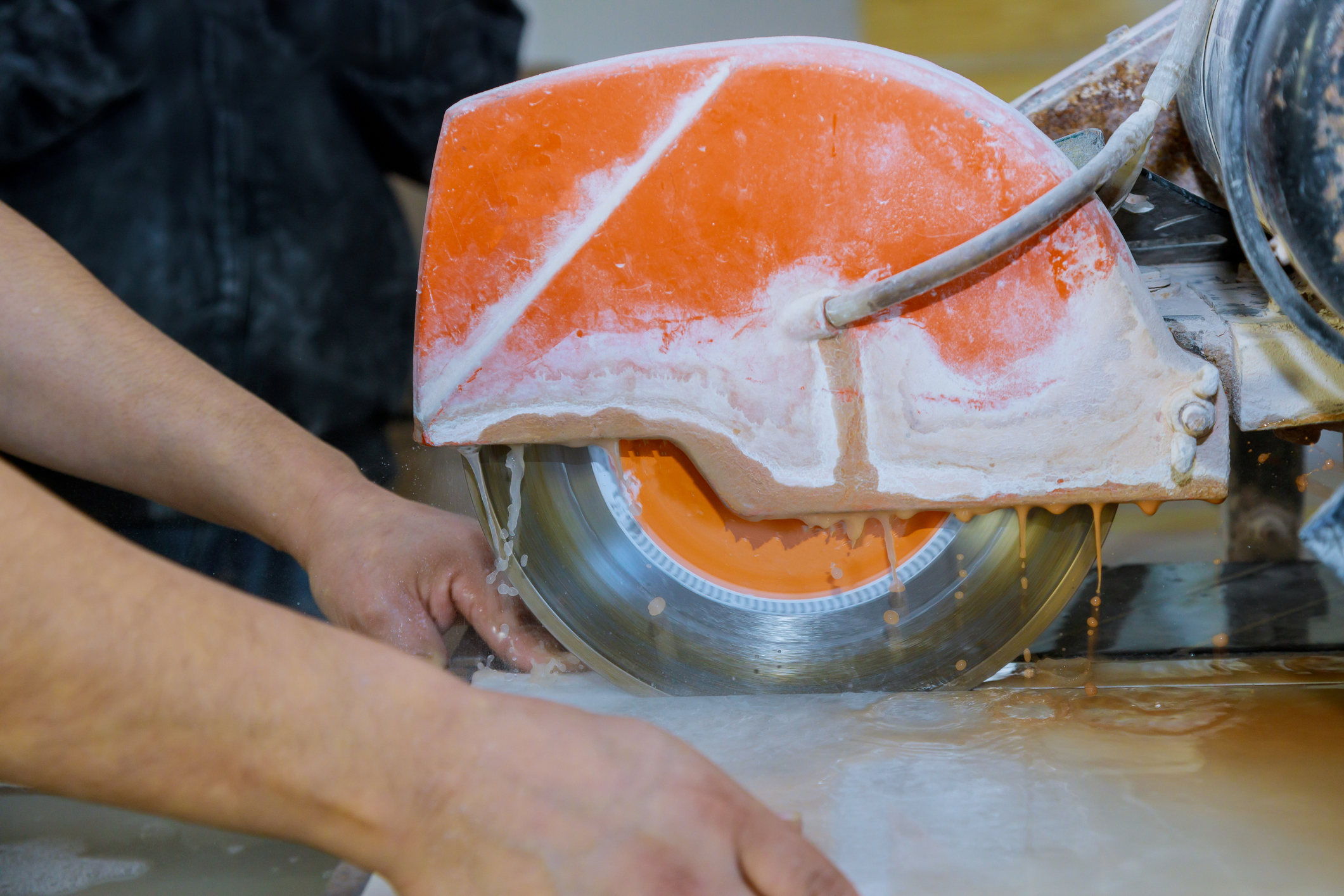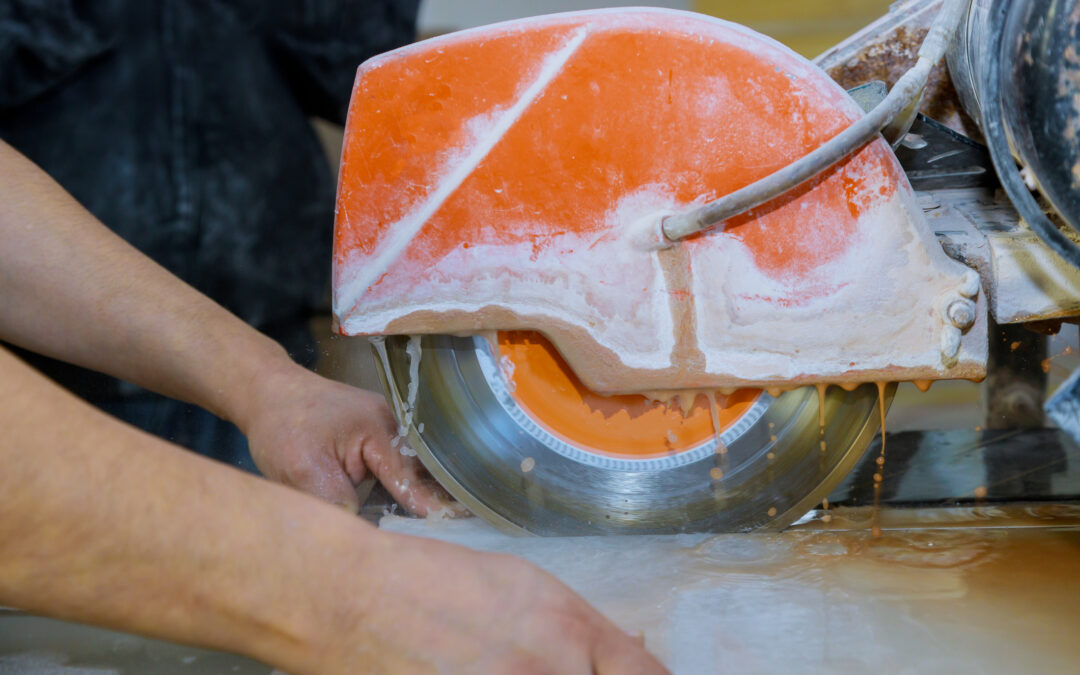Is using a wet saw to cut slate a mistake?
Cutting slate with a wet saw is generally viewed as an aesthetic mistake. Why? The sharp edge that the saw leaves can create an undesirable look as the slates lay atop each other. This may look fine in a closed valley or mitered hip, but not an open valley or rake. There are also a few other points to consider when deciding how to cut thick slate.
How To Cut Thick Slate?
When slate is thicker than 3/8″, there are not many options for cutting pieces for the valleys, hips or ridges. 3/8″ thick slate makes cutting with a traditional cutter too difficult. The cutter either will not start the cut or can break the slate.
The main method of cutting thick slate is to use a diamond blade saw and then to use a stake and hammer on the edge to create a chamfered look. It’s important to note that the diamond blade may create dangerous silica dust and make a mess.

This is not factually backed but a thought that goes along with square edges on roofing slate allows water to seep into the end grain pores and minimizes the life of the slate. It also creates an abrupt edge prone to wicking water back between the slate. Whereas the cleft or staggered edge left by a slate hammer or cutter properly drains the water without absorption and minimized wicking.
In certain cases, a wet saw will be your best option. Thick slate can be difficult to work with and hand cutting will not work. Consider using the wet saw and then trimming the chamfer back into the slate with a hammer and stake. This should get the desired look with thick slate.

